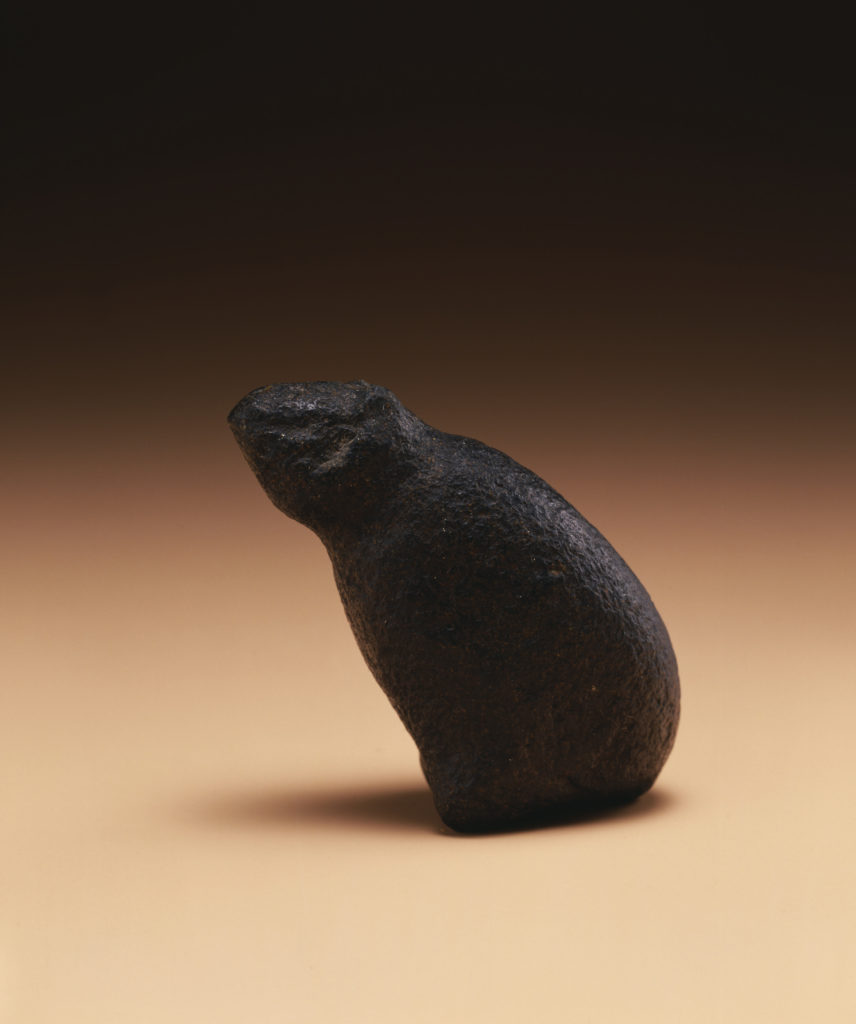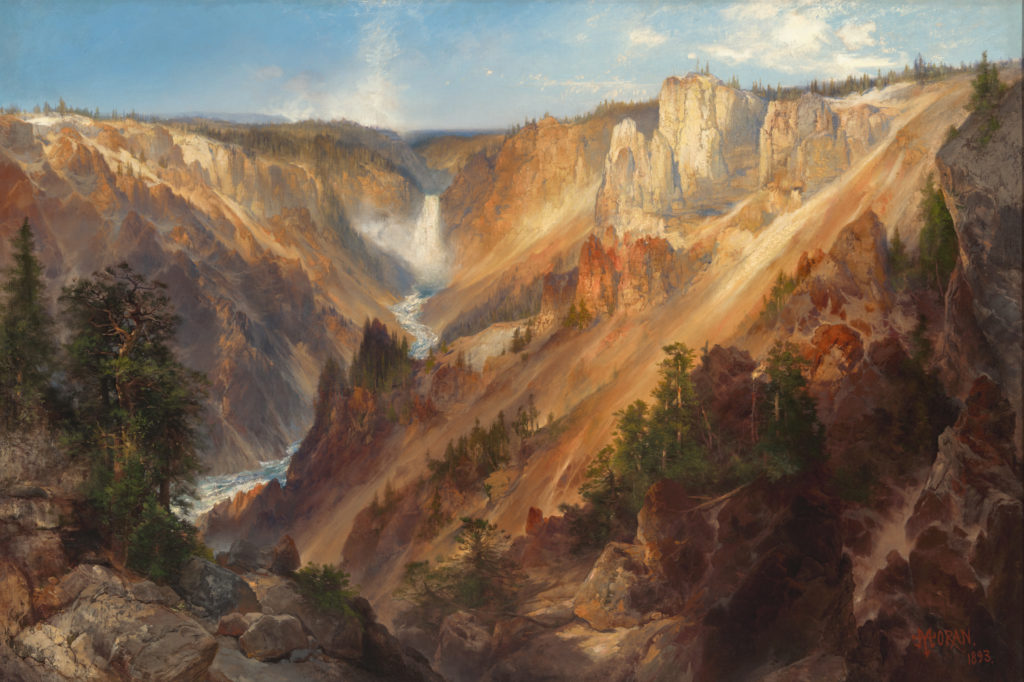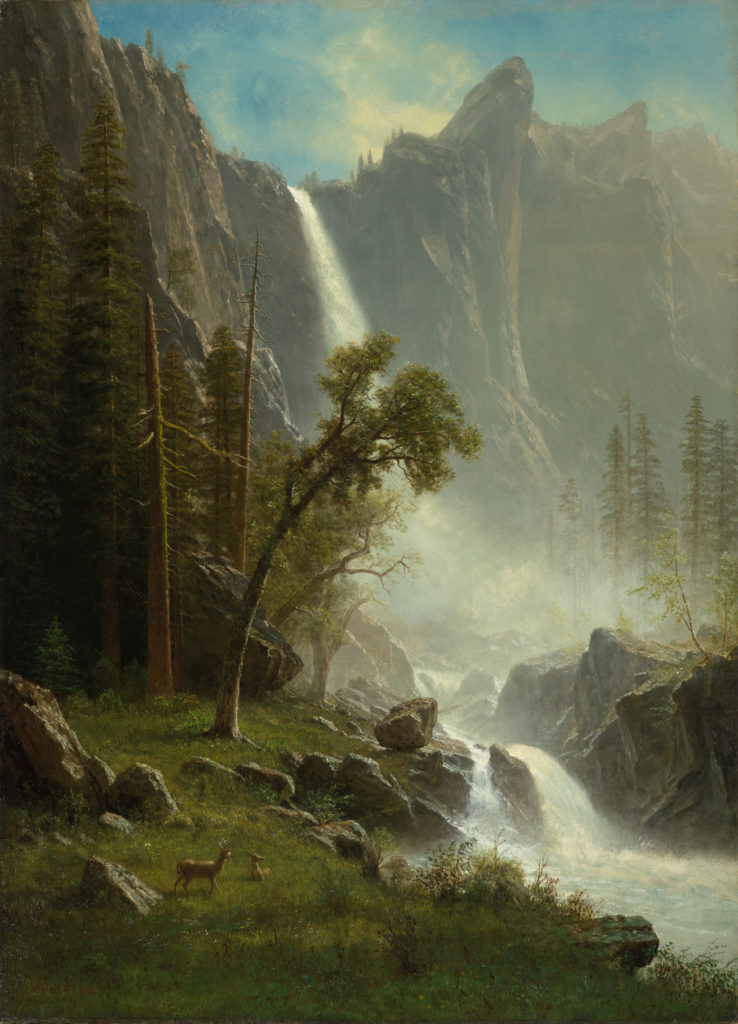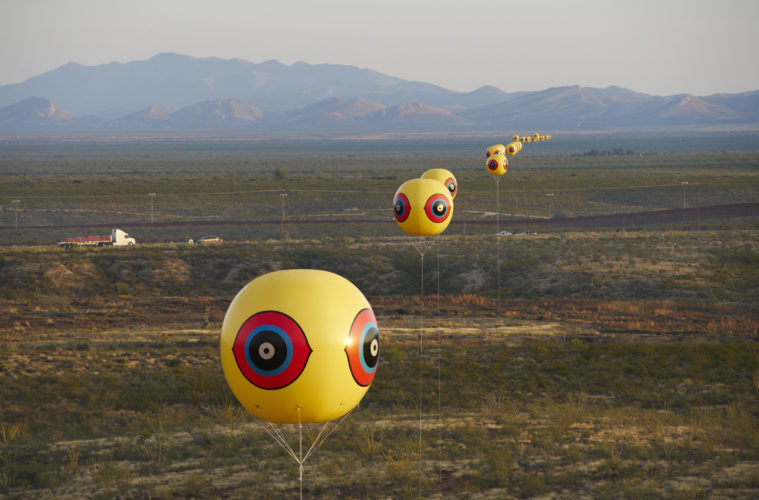Driving to view the latest exhibition at Salem’s Peabody Essex Museum, I happened to tune in to Margery Egan and Jim Braude on WGBH, who were discussing the pros and cons of the Green New Deal—legislation that sets some lofty goals to cut carbon emissions across the economy, from electricity generation to transportation to agriculture. This was a fitting, if serendipitous, prelude to “Nature’s Nation: American Art and Environment,” a show with more than 100 works that originated at the Princeton University Museum of Art last year and will be on view at PEM through May 5.

This is the first exhibition to examine how American and Native American artists have reflected and shaped our understanding of the environment (in its broadest sense) over the last 300 years. The featured works, including several from PEM’s own collection, are by artists such as Ansel Adams, John James Audubon, Winslow Homer, and Georgia O’Keefe, and are drawn from museums and private collections around the country. The show was co-curated by Karen Kramer, PEM’s curator of Native American and Oceanic art and culture, and Austen Barron Bailly, PEM’s curator of American Art.
An extensive mixed-media installation on the museum’s second floor, the exhibition does not shy away from environmental politics, but it doesn’t hit you over the head with them either, at least not at first. Viewers are drawn into this controversial territory by the more accessible mechanism of art through the ages and in myriad forms, including paintings, photographs, works on paper, sculpture, and even video. After viewing the show, I dare even the least activist-minded among us to leave without considering the implications of how art comes about and the uses it’s put to.
Nature’s Nation is divided into categories, such as “Portraiture,” “Landscapes,” “Cities,” and “Ethics,” that flow into one another more or less chronologically after the showstopping giant eyeball that ushers you, a bit ominously, into the exhibition. Representing a two-mile balloon installation called Repellent Fence, which was created on the United States and Mexico border by the artist group Postcommidity in 2015, the outsize scare eye is the first of several provocative pieces mixed in with the more traditional artwork that follows. (Main photo: Repellent Fence/ Valla Repelente, 2015. Installation view at U.S./Mexico Border, Douglas, Arizona/Agua Pieta, Sonora, 2015. © Postcommodity.)

For example, a selection of iconic landscape paintings, such as Thomas Moran’s 19th-century Lower Falls, Yellowstone Park, portray American scenery as pristine, uninhabited, and abounding in natural resources, as if no one lived there before the concept of Manifest Destiny underwrote the taking of the Western wilderness. But before succumbing to the romanticism of these images, we are pulled up short by two paintings side by side: Albert Bierstadt’s Bridal Veil Falls, Yosemite (1871-73), designed to encourage excitement about westward expansion in the late 1800s, next to Valerie Hegarty’s Fallen Bierstadt (2007), a deliberately damaged reproduction of the original that conveys the fragility of nature.“There is an interconnectedness to everything,” says PEM’s Kramer. “To view wilderness as this separate entity is a farce and creates major disconnects, which can lead to human environmental catastrophes.”
Similarly, one’s appreciation of an elegant neoclassical silver hollowware sugar urn on display is challenged by a placard stating that mining and refining silver ore created working conditions that resulted in the poisoning, maiming, and death of millions. This dialogue of historic masterworks with contemporary topics engages you throughout the exhibition.

Like deforestation and workplace hazards, there are a variety of other emotional “entry points” to Nature’s Nation. If the sinuous dance movements and methodic drum beats in a video juxtaposition of an indigenous Pacific Northwest tribe with electronic dance music don’t cause you to reconsider your perspective, photojournalist Dorothea Lange’s haunting black-and-white portrait of an extenant farmer in Depression-era California. Civil War photographer Matthew Brady’s Wounded Trees at Gettysburg, showing a man lying on the ground surrounded by trees battered by bullets and shells, is a small 4- by 7-inch stereograph dramatically mounted all by itself on an entire wall. Toward the end of the exhibition, in a section titled “Documentation and Activism,” there is a poster designed by Robert Rauschenberg for the first Earth Day on view, along with Edward Burtynsky’s large-format photograph depicting the 2010 oil spill in the Gulf of Mexico. “While trying to accommodate the growing needs of an expanding, and very thirsty civilization, we are reshaping the Earth in colossal ways,” Burtynsky writes in his artist’s statement about his series of oil spill photographs. “My hope is that these pictures will stimulate a process of thinking about something essential to our survival; something we often take for granted—until it’s gone.”
Those closest to the mounting of this exhibition emphasize its goal to broaden our perspectives and attitudes of the wider world. “It is not all doom and gloom,” says PEM’s Bailly. “We want to follow the lead of the extraordinary artists included in this exhibition, who have used their vision and their talents to inspire us to imagine new ways forward.”

